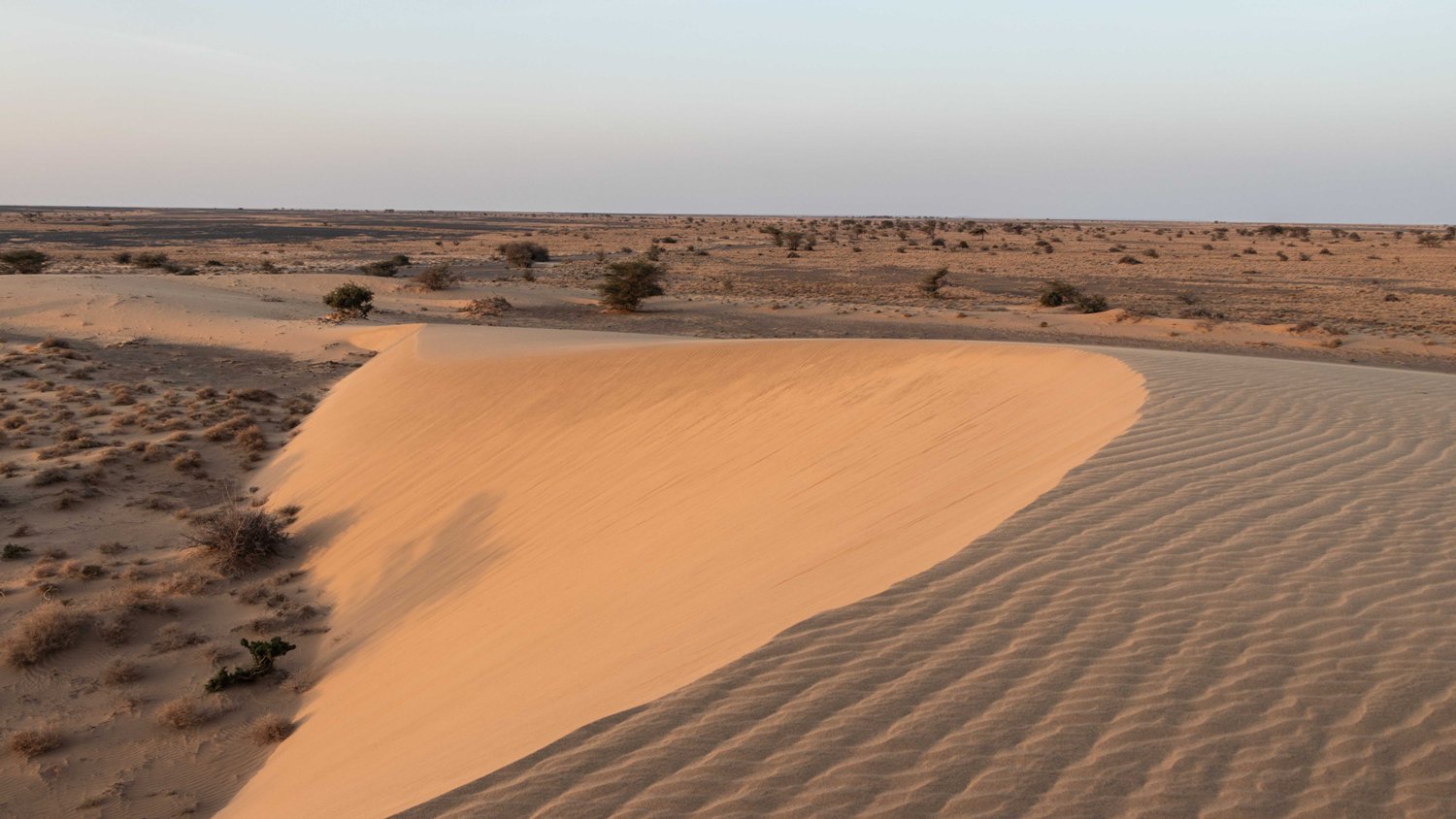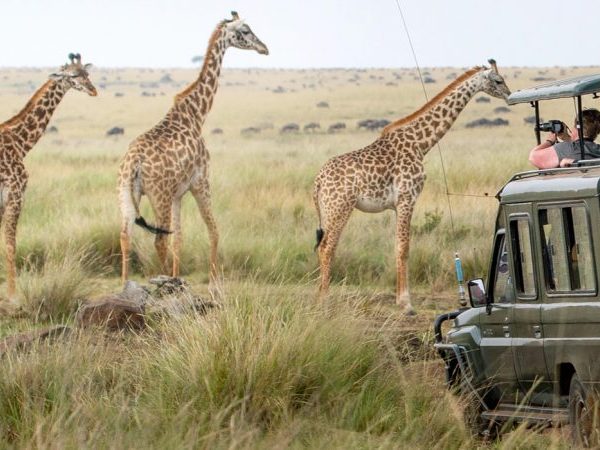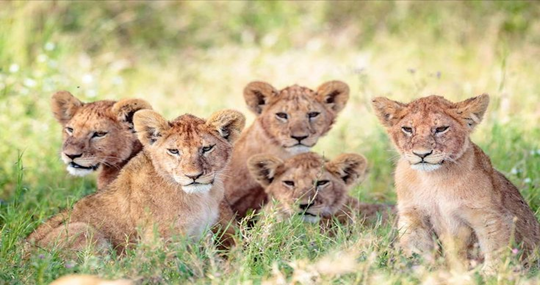The Chalbi Desert is a surreal, sun-scorched expanse in northern Kenya, tucked between Mount Marsabit and the eastern shores of Lake Turkana, close to the Ethiopian border. This is not your ordinary desert—it’s a place where ancient lake beds, dramatic volcanic ridges, and centuries-old pastoralist cultures converge to create a captivating wilderness. Covering approximately 100,000 square kilometers, the Chalbi Desert is the largest true desert in Kenya, yet still remains one of the least explored treasures of East Africa.
Whether you’re a geology enthusiast, cultural explorer, photographer, or adrenaline-seeking traveler, the Chalbi Desert offers a raw and unforgettable safari experience in Kenya’s wild north.

Etymology: The Meaning Behind “Chalbi”
In the Gabbra language, “Chalbi” means “bare, salty area”, aptly describing the desert’s cracked salt pans, barren stretches of land, and sparse vegetation. Long ago, the region was a massive lake that dried up between 10,000–11,000 years ago, leaving behind its salt-encrusted floor and fossil-rich beds.
Location and Landscape: Where Is Chalbi Desert?
Located in Marsabit County, east of Lake Turkana—the world’s largest permanent desert lake—the Chalbi Desert lies in one of the most arid and hottest regions in Kenya. The desert spans 110 km in length and 10–20 km in width, creating a dramatic scene of coarse sand, hardened clay, ash-gray ridges, and broken clusters of tiny huts. The southern desert is home to the Rendille people, while the eastern side near Ethiopia is inhabited by the Gabbra community.
Surrounding volcanic hills provide a magical panorama, while the ancient lakebed in the middle reveals the fossilized legacy of a wetter past.
A Geological Wonder
The Chalbi Desert is a relic of the past. Once a vast shallow lake some 10,000 to 11,000 years ago, today it is a dried-out basin filled with salty earth, volcanic rock formations, and lava outcrops that disrupt the otherwise flat terrain. When it rains—albeit rarely—the hardened mud turns into sticky sludge, and in rare instances, temporary lakes form, drawing migratory birds and creating surreal desert oases.
Recognized as a vital geosite in Kenya, Chalbi is an invaluable site for paleoclimatic research. Fossils found in the region, such as those of aquatic creatures like the Nile perch, support the belief that the desert once hosted a vast freshwater lake this offer insights into East Africa’s climatic history. It is also known as a source of the mineral eugsterite.
Climate and Wind Power
Chalbi is classified as a rain-shadow desert, receiving an average annual rainfall of around 150 mm—sometimes even less. In 1973, for example, just 7 mm of rain was recorded. Yet, despite its dryness, evaporation exceeds 2,600 mm annually, highlighting the desert’s harsh and arid nature.
But it’s not just the lack of rain that defines Chalbi—it’s the wind. The desert experiences some of the strongest sustained wind systems in the world, with speeds exceeding 50 km/h for over 50 days each year. These winds frequently stir up intense sandstorms, and they’re also the reason Chalbi hosts Africa’s largest wind farm on its western edge—though, regrettably, local communities have seen little benefit from the energy generated.
Climate-Weather overview summary
- Scorching temperatures: Daytime highs range from 43°C to 46°C (109°F to 115°F).
- Night chills: Drops to 14°C to 15°C (57°F to 59°F).
- Rainfall: As little as 150 mm (6 inches) annually; some years barely get 7 mm.
- Evaporation: Over 2,600 mm (100 inches) per year.
- Winds: Among the strongest and most consistent in the world; over 50 days annually with gusts exceeding 50 km/h (31 mph).
- Sandstorms: Frequent, especially in the dry seasons.
The desert experiences two rainy seasons (April–May, November–December) and two dry seasons (July–October, January–February). During rare rainfalls, the desert transforms dramatically—temporary lakes form, wildlife gathers, and vibrant grasses briefly carpet the plains.
Flora and Fauna: Life in Harshness
Though the desert is mostly barren, life finds a way. Its saline soil supports sparse vegetation, including Salvadora persica, Acacia tortilis, and hardy grasses during rainy years. Unique species like Drakebrockmania somalensis and Lagenantha nogalensis adapt to the saline lakebed, while edge regions shelter species like Hyphaene coriacea palms.
Chalbi is also home to surprising wildlife. Visitors might spot the Somali ostrich, Grevy’s zebra, oryx, reticulated giraffe, and even African elephants. While black rhinos once roamed the region, they have sadly been hunted to extinction. Lions still maintain a presence, testifying to the desert’s place in Kenya’s greater ecological tapestry.
Culture and People
The desert is not empty—it is home to proud, resilient pastoralist communities. Chief among them are the Gabbra people, who have adapted their livelihoods to the desert’s extremes. They herd goats, camels, and cattle, relying on centuries-old knowledge of seasonal patterns and water sources. Interestingly, salt pans found in the Chalbi Desert are harvested by pastoralists as natural salt licks for their animals—a crucial part of livestock health.
Other pastoral groups, including the Rendille, Dasanech, and Turkana, also inhabit the fringes of Chalbi.
Renewable Energy: The Lake Turkana Wind Power Project
On the desert’s western edge lies Africa’s largest wind farm, the Lake Turkana Wind Power Project, taking advantage of the region’s powerful wind systems. While it marks a significant step toward sustainable energy, local communities have yet to fully benefit from this mega project.
Adventure Tourism in the Chalbi Desert
In recent years, the Chalbi Desert has emerged as one of Kenya’s new and trending travel destinations for off-the-beaten-path explorers. Here are some top things to do in the Chalbi Desert:
- Desert Safari
Explore panoramic salt flats, lava rock fields, and wind-swept dunes on a 4×4 land cruiser. Dune bashing and sand surfing are popular among thrill-seekers.
- Camel Trekking
Traverse the desert like the locals—on camelback. It’s a peaceful and authentic way to experience this ancient land.
- Cultural Tours
Interact with the Gabbra, Rendille, Turkana, and Samburu communities. Discover traditional dress, desert survival skills, and age-old rituals during immersive village visits.
Best Time to Visit Chalbi Desert
For the best travel experience, visit during the dry seasons:
- July to October
- January to February
These periods offer ideal conditions for game drives, photography, and cultural interaction with local pastoralist communities.
Getting There
From Nairobi, the journey to the Chalbi Desert takes about 8–10 hours by road. En route, you’ll pass through Nanyuki, enjoy views of Mount Kenya, and traverse the rugged terrains of Marsabit County—making the trip an adventure in itself.
Why Visit Chalbi Desert?
The Chalbi Desert is a realm of stark contrasts—extreme weather, resilient life, rich culture, and unexplored wilderness. It is one of the most authentic and underrated safari destinations in Kenya, perfect for adventurous travelers seeking solitude, discovery, and unique photo opportunities.
Plan your next adventure to the Chalbi Desert with Priority Wild Safaris and experience Kenya like never before.



